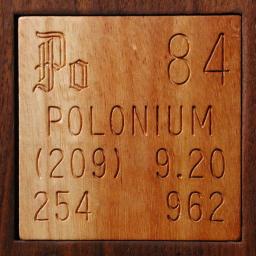












Panopticon biker?







Alpha-only radiation emitters
( This is currently the only legal Alpha source available without a license. )
| ISOTOPE | ACTIVITY | HALF-LIFE | ENERGIES (KeV) |
|
| 0.1uCi | 138 days | 5304.5 |

 勺儲靄靄醴醴醴蠶體酌羽紜益㎎益山∴ ベヨ迢鋸醴蠶蠶蠶蠶蠶蠶蠶蠶蠶蠶蠶蠶
勺儲靄靄醴醴醴蠶體酌羽紜益㎎益山∴ ベヨ迢鋸醴蠶蠶蠶蠶蠶蠶蠶蠶蠶蠶蠶蠶
The exhibition is divided in three parts: photomontages by great Soviet artists from the 1920s and '30s (Alexander Rodchenko, El Lissitsky, Gustav Klutsis, Piotr Galadzev, Varvara Stepanova, etc.); anonymous photomontages used in schools and factories; and photomontages dating from World War II.
Alexandre Rodtchenko, Syphilis, 1926 and Sergey Yakovlevic Senkin - Green plants for the workshops of the factories, 1931
The photomontage technique appeared in Russia and Europe during WWI and bloomed particularly at the Bauhaus in Weimar and in Moscow. The pioneers of the genre are Alexander Rodchenko, El Lissitsky and Gustav Klutsis. Their work gets a boost after the October Revolution. Vladimir Lenin declares that photography is a super-powerful propaganda tool in a country where 70% of the population cannot read. During the civil war he even plans to give every soldier a camera in order to let them use it as a weapon able to demonstrate visually and precisely the political changes. The idea wasn't pushed any further. It was technically tricky and the country was facing more ruins and bleak desolation than the State would admit. The photomontage would then be used to portrait a cheerful "reality" and bright future. The medium was perfect: it combined the realism of the photography with the revolutionary rhetoric
B. Klinch, May 1 in Moscow, 1936
In the early '30s the themes and structures of photomontage are gradually modified. The composition featuring several characters (workers, soldiers, farmers, etc.) are turned into a homogenous human aggregate dominated by a unique figure: Joseph Stalin.
A.Jitomirski, Cover of the magazine "Ogonjok", 1943 and Michael Dmitriev, On fire front, 1930s
During the WWII, the photomontage becomes the main propaganda weapon inside the country but also outside of it to demoralize the enemy. Jitomirski, for example, designed thousands of propaganda leaflets during the war. So many of them were thrown to German troops that Joseph Goebbels put the name of the artist on the list of the "Ennemies of the State" with a commentary that said "Find him and hang him!"
Because of the anti-cosmopolitan campaign, in 1949, many photographers lost the right to take any picture. And countless illustrated magazines had to close.
On view through January 7, 2007, at the Passage de Retz gallery in Paris.
My images on flickr. Mini-gallery on evene.fr and mdf.ru. Nice overview of the exhibition in Le Monde.
Image on top left corner: Soldiers of the Red Army by Varvana Stepanova, 1930.
The Tate Modern also has a gallery currently devoted to Soviet-era photo-collages. I think it's the first time I have seen such a thing in a fine art museum.
Here is a link: http://www.tate.org.uk/servlet/CollectionDisplays?roomid=3661
Jason at November 26, 2006 12:08 AM
「ヒャッヒャッヒャって生地をいっぱい使って」「ポンポンポンポーンって飛ばして」「ブワーンって、シャキーンって」「フワフワフワ~ってしたいの」このワケわからん擬音語を、なんとか解釈してスタッフがデザイン画をおこすのである。
Sometimes, madness leads to genial ideas. One can say : "is a gun a good idea ?" Well, it must be true, or else why do we build so many ones? Guns,as any weaponery, require high technology, and fine engeneering.
The immense weapon you can see have existed. Moreover, there were two of these incredible guns. It has been manufactured by Krupp for the third Reich during WW-2. Hitler wanted "a gun able to pierce a meter of stell, seven meters of concrete, or thirty meters of dense earth". As you can see, it's a railroad gun. But it's so large that two railways are just enough to ensure stability and weight distribution.
Three calibers could have been used: 700, 800 and even 1000 mm ! The Oberkommando Heer conducted the fisrt tests of these enormous guns during 1935, for the growing Reich. You must know that railroad guns where very numorous during WW-2: they represented mobile high-power artillery. Before the Dora, the largest of these were 280 mm units. The design of the gun, which was very demanding, ended in 1937.
Even now, we can hardly imagine how we could manufacture the enormous 290 tonnen barrel, an huge steel pipe, 32 meters long. Monobloc trunion craddles, on which are put the trunion pins of the barrel, are as tall as a 4-floor building : these oversized parts needed long preparation, and initial delivery date during spring 1940 could not be met. The gun was ready in '41, and undergone testing at the Hillersleben training ground. It was ready for action in late 1942.
Unfortunately (for the gun), all its targets where almost down or captured at this time: the Maginot line, Gibraltar...
The only target the Dora crushed was Sevastopol. During five days, the gun shot 48 shells over 7 targets. Its monstruous power put down the forts of the town, delivering never seen damage at each shot. You know the "bang" a rifle does, so try to imagine the sound of apocalypse when a 7 ton shell is fired, using thousands pounds of gun powder, enough to send it dozens of miles away... This is not sci-fi, this was the madness of a tyran, and probably the most outstanding achievement in conventionnal balistics.
| Effective range | 40 km |
| Max. elevation | 53° |
| Total weight | 1350 tonnen |
| Barrel weight | 400 tonnen including 110 tonnen breech block & ring |
| Overall lenght | 43 m |
| Width | 7 m |
| Height | 12 m |
| Barrel lenght | 32 m (40 times its caliber) |
| Shell type | Armor capped 3.75 meter shell (without propellant casing) |
| Shell Weight | 7100 kg |
Funny trick : I had a dog when I was younger. It was a female called...Dora. Now she's dead, but she left many happy little dogs behind her. Let's hope it won't be the same for this gun...










Comments (1) Share




